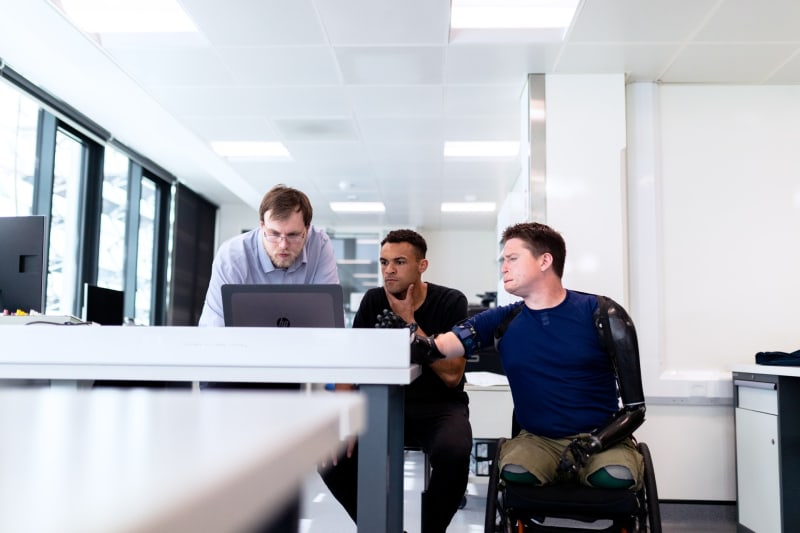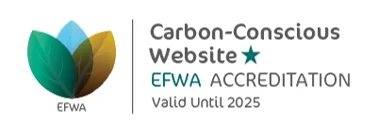How making your website accessible is also great for SEO

Making your website completely accessible isn’t just the right thing to do, it also makes good business sense. As I mentioned in my last blog on how to make your website more accessible, there are 14 million disabled people in the UK, so why wouldn’t you want to ensure they are able to easily access your business online?
But having an accessible website also serves another important purpose. It helps with SEO.
Google’s recent Google’s Core Web Vitals update now includes ‘page experience’ in its rankings. This focuses on ensuring people have the most helpful and enjoyable experience when using websites and is something Google is planning to update on a regular basis.
The good news is many of the factors that improve accessibility also improve the overall user experience so, by default, will help improve your SEO. Here are some of the key things you should be incorporating into your website.
1. Provide descriptive page titles
Screen readers are a form of assistive technology that converts text and images into a usable format for those who can’t read it, such as people who are visually impaired, have a learning disability or are illiterate.
When a screen reader arrives at a page, the first thing it will read out is the page title. A descriptive title will let the user know they have arrived at the page they want to view. Informative page titles also enable users to quickly scan through multiple open tabs to find the one they want.
A good page title also helps with SEO as it enables search engines to understand what the page is about and how relevant it is to a particular search. For example, if someone searches for ‘Pilates classes near me’, Google will show the page with a more informative page title, such as ‘Pilates classes in Oxford, rather than one that simply says ‘Home’.
2. Use headings correctly
Headings on a webpage are a great way of improving the user experience, as they enable users to quickly locate content to find a section that’s relevant to them. This is particularly useful to someone who is using a screen reader as they won’t need to have the whole page read to them to find they content they want. But this also means headings must be used in a set way, namely:
<h1>Main heading</h1>
<h2>Section heading</h2>
<h3>Subsection heading</h3>
<h4>Sub-subsection heading</h4>
If you don’t follow this hierarchy, then the user could think some content is missing.
From a SEO perspective, Google advises “Breaking your content up into logical chunks or divisions helps users find the content they want faster”, so using headings is one of the more important aspects of good SEO.
3. Give your images context
Adding ‘Alternative text’ or alt text to an image is a crucial accessibility requirement as it provides users with visual impairments a description of what the image shows.
It also helps with SEO as Google “uses alt text along with computer vision algorithms and the contents of the page to understand the subject matter of the image”.
But adding alt text isn’t just about providing search engines with more information about the content of the page. It’s also about ensuring images show up in Google Image searches, which offers businesses another opportunity to drive traffic to their websites.

4. Make sure your site includes a sitemap
A sitemap gives visitors a full overview of what your site contains and helps them understand how the content is arranged. This is particularly important for accessibility as it gives people an alternative way to quickly access the most important pages on the site.
And just as it makes it easier for screen readers, it’s also great for SEO, as search engine crawlers will use sitemaps to find the most relevant pages to a search query.
Just remember to update the sitemap if you add new content, as this will help it be indexed by search engines a lot quicker.
5. Include video transcriptions and captions
Any audio or video content should have captions or be transcribed for those who have sight or hearing problems, are in a noisy environment or have slow internet access.
The good news is as search engines don’t actually listen to content, providing a text-based version ensures any video gets indexed by search engines.
6. Avoid using ‘Click here’
While ‘Click here’ might be an easy option, links to other pages or websites always need to be descriptive. This helps both screen readers and search engine crawlers understand the context of the link and what it is linking through to.
Here’s a list of generic link text which Google suggests you avoid.
7. Use breadcrumbs to show how your site is organised
Just like a sitemap, breadcrumbs give users another way of navigating a website and understanding how the site is structured. This can be especially important for people with memory problems or those who get easily confused as it lets them quickly trace back the path they have taken through the site.
It’s also great for SEO as it shows search engines how the site is structured.

8. Ensure your navigation is consistent
No matter who is accessing your website, they should be able to do it easily, which is why it’s important your navigation is consistent in both look and feel.
Repeated components which appear in the same order and in the same place help users feel comfortable about where things will appear, which is particularly important for users with cognitive impairments or people with learning disabilities. And people with low vision may use a screen magnification tool to make content larger, so it’s important there are consistent visual cues so they can easily locate the content they need.
For search engines, how visitors behave on your website is important. They want to see that visitors can easily navigate around your site and quickly find what they want. A well-structured navigation also helps search engines identify the most important pages, which also helps with SEO rankings.
Learn more about SEO and accessibility
As mentioned at the start, making your website site accessible is good business sense, especially as incorporating the following tips into your website design, also helps improve the quality and quantity of website traffic to your site.
If you would like to learn more, take a look at this article on search engine optimisation or at the following links on website accessibility:
